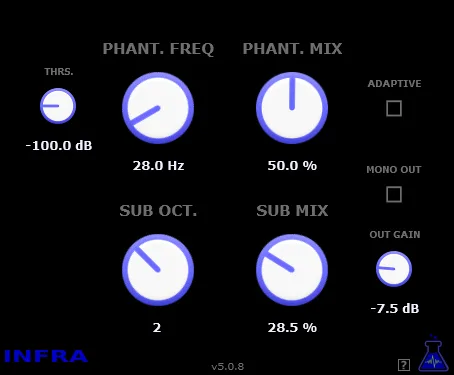FET Limiter: Your Reliable Tool for Professional Mastering
In the world of music creation, where every detail matters, quality mastering is the final touch that transforms a mix into a ready-to-market track. One of the most important tools in this process is a limiter – a plugin that allows you to control signal peaks and increase the overall loudness of a track. The FET Limiter from Mike Milani is just such a tool, designed specifically for mastering needs, promising to add the necessary control and characteristic sound to your tracks.
What is a FET Limiter?
The FET Limiter is based on the simulation of the behavior of dynamic processors that use field-effect transistor (FET) technology. This technology is known for its extremely fast attack time, making it ideal for instant response to the fastest audio signal peaks. Unlike transparent digital limiters, FET circuits often add a certain harmonic coloring and a unique compression/limiting curve, which many engineers appreciate for its musicality and ability to “glue” mix elements together.
The FET Limiter from Mike Milani aims to reproduce these desirable characteristics in a convenient VST plugin format. It is designed to be placed on the master stereo bus as the final stage of processing, where its main function is to prevent digital clipping and optimize the overall loudness level before publication or distribution.
Key Features and Benefits for Mastering
Using the FET Limiter in your mastering chain can provide a number of significant benefits:
Reliable Peak Control
Thanks to the fast attack, characteristic of FET design, the plugin effectively tames even the sharpest level fluctuations, ensuring a clean output signal without unpleasant digital distortions, known as “clipping.” This is critical for creating loud, but dynamically correct master tracks.
Adding Character and “Punch”
Although the main task of the limiter is to control dynamics, FET limiters often introduce a light, pleasant saturation and compression, which can make the mix more integral, add subjective warmth or aggression to it, depending on the settings. This “analog” imprint is what distinguishes FET processing from more sterile digital alternatives.
Increasing Perceived Loudness
By effectively limiting peaks, the FET Limiter allows you to increase the overall average level (RMS or LUFS) of your track without the risk of overload. This helps your music sound competitively loud compared to commercial releases without sacrificing quality.
Ease of Use
Plugins designed for a specific task often have an optimized interface. Although the details of the FET Limiter interface from Mike Milani are not disclosed in the basic description, such limiters usually provide direct control over the threshold and, possibly, the release time, which makes them intuitive even for those who are just starting to delve into mastering.
How to use the FET Limiter in your workflow
Typically, the FET Limiter is placed as the last or penultimate effect on the master stereo bus, after all equalizers, compressors, and other processing. Its goal is to “catch” the remaining peaks and bring the overall loudness to the desired level.
Experiment with the threshold setting, gradually lowering it until you reach the desired level of limiting and loudness. Listen carefully to how the limiter affects the “punch” and dynamics. Even a small amount of limiting can significantly improve the sound. Remember the importance of “auditory” control – what is measured on peakmeters does not always correspond to the subjective perception of loudness and dynamics.
Technical aspects
The FET Limiter from Mike Milani is available in VST format and is compatible with Windows operating systems (64-bit version only). This ensures wide compatibility with most modern digital audio workstations (DAW) on the Windows platform.
Conclusion
The FET Limiter from Mike Milani is a focused and potentially very useful tool for the final stage of processing your audio projects. Combining effective peak control with the characteristic sound of FET circuits, it can become a valuable addition to the arsenal of any musician, producer, or sound engineer who strives to achieve a professional and energetic sound for their tracks. Try integrating it into your workflow and evaluate how it can improve your mastering.



